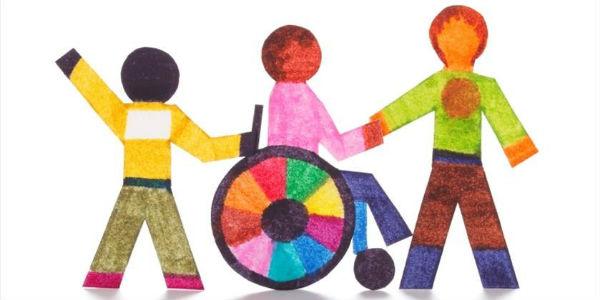
Let's Talk About Inclusion!
Last year, the principal at my son’s elementary school asked me to write a short essay about inclusion of students with special needs for the school newsletter during Autism Awareness Month. I wrote a 450 word piece and submitted it a week before the deadline. She never printed any part of it. I think my direct approach to the topic made her uncomfortable.
Inclusion was on my mind again yesterday when a friend who lives across the country sent me the following message: “Do you have any good links to resources for first and second grade students to help them learn more about autism? I teach a combined class with 25 general ed students and 7 autistic students, and today I found myself disciplining my gen ed kids for unkind words spoken in ignorance. I was incredibly angry until I realized that the kids have gone the whole year in a combined class and no one has ever talked to them about what autism is to help them understand their classmates.”Talking about inclusion to general education students and their families
Inclusion is a hot topic in education today, but it’s usually discussed behind closed doors at IEPs and other school meetings. Too often, it is not presented openly to general education students and their families - sometimes because of a fear of backlash. A failure to teach inclusion to all students equals exclusion. General education students are excluded from an understanding of their classmates with special needs, and students with special needs are excluded socially because of a lack of understanding. Sometimes the exclusion can escalate into a bullying situation - I know this because it happened to my son. So let’s step out of the comfort zone and talk about inclusion.Resources to Teach Inclusion
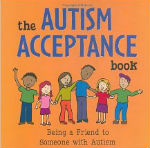 The Special Needs Acceptance Book and The Autism Acceptance Book by Ellen Sabin: these books have open-ended exercises and classroom activities for kindergarten through sixth grade students. I always give a copy to my son’s teacher during the school year.
The Special Needs Acceptance Book and The Autism Acceptance Book by Ellen Sabin: these books have open-ended exercises and classroom activities for kindergarten through sixth grade students. I always give a copy to my son’s teacher during the school year.
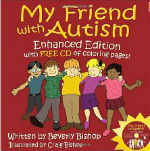 My Friend With Autism by Beverly Bishop: the author, a parent of a child with autism, created this book with vivid illustrations and a charming storyline as part of her inclusion curriculum for her son’s classmates and teachers.
My Friend With Autism by Beverly Bishop: the author, a parent of a child with autism, created this book with vivid illustrations and a charming storyline as part of her inclusion curriculum for her son’s classmates and teachers.
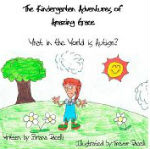 The Kindergarten Adventures of Amazing Grace by Briana Pacelli: A brother and sister wrote and illustrated this storybook about acceptance.
The Kindergarten Adventures of Amazing Grace by Briana Pacelli: A brother and sister wrote and illustrated this storybook about acceptance.
Peer to Peer Support
In 2011, a study funded by the National Institutes of Health found that peer-to-peer support is the single most effective intervention for students with autism. Furthermore, the peers who receive training are enriched by their experience, because they are actively learning interdependence, a necessary life skill. Therefore, peer-to-peer support is an essential part of every child’s education!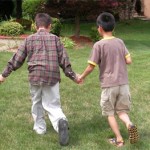 The social worker at my son’s school coordinates a type of peer-to-peer support called Circle of Friends. She made a presentation about autism to my son’s class in the fall, and she invited students to volunteer to be in his Circle of Friends. The social worker provides training and group activities on a weekly basis.
The social worker at my son’s school coordinates a type of peer-to-peer support called Circle of Friends. She made a presentation about autism to my son’s class in the fall, and she invited students to volunteer to be in his Circle of Friends. The social worker provides training and group activities on a weekly basis.
 Some schools use slightly different peer-to-peer support programs such as Peer Pals and LINK. These are cost-effective, evidence-based methods that benefit all students.
Some schools use slightly different peer-to-peer support programs such as Peer Pals and LINK. These are cost-effective, evidence-based methods that benefit all students.
Frequently Asked Questions About Inclusion
Did you insist that your child be moved from special education into general education? Other parents are surprised when I answer, “No.” Federal law requires that students be educated in the least restrictive environment, and since my son graduated from all available self-contained special education classrooms in first grade, the only option remaining for him was a general education classroom.
Does your child know that he’s different? Yes, he does. He literally spends every waking minute working to catch up with his classmates’ academic and social skills. He doesn’t want to take breaks, because he knows that he’s already far behind. Part of my job as his mom is to make sure that he has fun every day, too.
Does your child want to have friends? Yes, but he’s afraid. He has learned the hard way that some students do not have good intentions with him. He becomes confused during transitions and unstructured times of the day, such as lunchtime or recess. He’s always looking for a friendly face or a kind word.
Does your child have anything to offer in a friendship? Yes, but it takes time to get to know him. He loves roller coasters, skyscrapers and art museums. He rides his bike and plays basketball. He excels at spelling and phonics. He loves to help with whatever is happening at the moment. He’s on the school Safety Patrol and he submitted two entries to the school art contest. In other words, he’s a typical American kid.
What inclusion stories or questions do you have? Share in the comments below.



